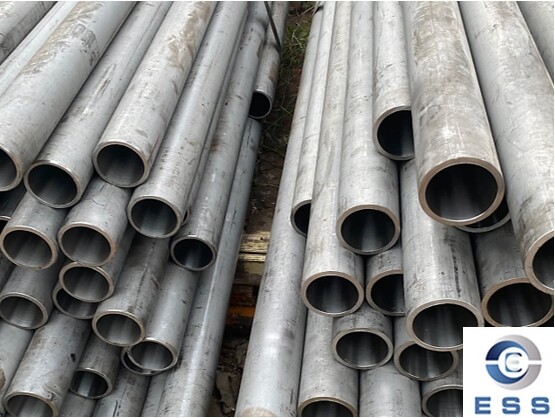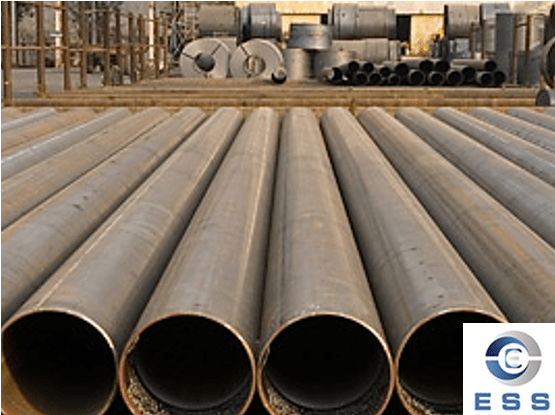
Stainless
steel pipes have good corrosion resistance and high temperature resistance,
and can maintain the integrity and performance stability of the pipes in harsh
working environments. Compared with traditional hydraulic
tubes materials, such as carbon
steel pipe and alloy steel pipes, stainless steel pipes are more durable,
which can greatly extend the service life of the hydraulic system and reduce
maintenance costs. In addition, stainless steel pipes have high strength and
excellent mechanical properties, which ensure the safety and reliability of the
hydraulic system.
Compared with carbon steel hydraulic
tubes
1. Strong corrosion resistance
Stainless steel hydraulic tubes contain
alloy elements such as chromium and nickel, which can form a dense oxide film.
In humid, acidic and alkaline corrosive environments, the corrosion resistance
is far better than that of carbon steel hydraulic tubes. It is not easy to
rust, corrode perforation and other problems, and has a longer service life.
2. Good mechanical properties
The strength and toughness of high-quality
stainless steel are equivalent to or even higher than those of carbon steel. It
can withstand greater pressure and impact, and is less likely to deform and
rupture in complex stress environments.
Compared with copper alloy hydraulic
tubes
1. Equivalent corrosion resistance
In some specific corrosive environments,
such as non-oxidizing acid environments, copper alloy hydraulic tubes have good
corrosion resistance, which is equivalent to stainless steel hydraulic tubes.
However, in oxidizing acid, ammonia and other environments, stainless steel
hydraulic tubes have better corrosion resistance.
2. Higher strength
The strength of stainless steel is
generally higher than that of copper alloys. In high-pressure and high-impact
hydraulic systems, stainless steel hydraulic tubes can withstand pressure
better, are less likely to deform and crack, and have better durability.
However, copper alloys have better toughness and fatigue resistance, and have
certain advantages in some occasions with frequent vibration.
Compared with rubber hydraulic tubes
1. Strong anti-aging ability
Rubber hydraulic tubes are prone to aging
and cracking during long-term use, especially in high temperature, ultraviolet
radiation and other environments, the aging speed is faster. Stainless steel
hydraulic tubes do not have aging problems and can maintain stable performance
for a long time.
2. Good pressure resistance
The pressure resistance of stainless steel
hydraulic tubes far exceeds that of rubber hydraulic tubes, and can adapt to
higher pressure hydraulic systems. Rubber hydraulic tubes are prone to bulging
and cracking under high pressure, and their durability is poor. However, rubber
hydraulic tubes have good flexibility and shock absorption, and have their
unique advantages in some special occasions.
Precautions for stainless steel pipes as
hydraulic tubes
Although stainless steel pipes have
superior performance in hydraulic systems, there are also some matters that
need to be paid attention to in their use. First, the price of stainless steel
pipes is relatively high, and it is necessary to make a choice based on the
needs and budget of the specific hydraulic system. Secondly, stainless steel
pipes are not easy to cut and process, and the processing is difficult,
requiring professional technical and equipment support. In addition, the
thermal expansion coefficient and elastic modulus of stainless steel pipes are
large, and these factors need to be taken into account when designing hydraulic
systems to avoid problems such as pipeline deformation, fatigue and leakage due
to thermal expansion and contraction.
Summary
In general, stainless steel pipes have high
durability as hydraulic tube materials, but specific problems should be
analyzed in actual applications to select the best material for their own
hydraulic system. At the same time, when using stainless steel pipes, it is
necessary to pay attention to factors such as price, processing difficulty, and
thermal expansion and contraction to ensure the long-term stable operation of
the hydraulic system.













 Eastern Steel Manufacturing Co.,Ltd not only improve product production and sales services, but also provide additional value-added services. As long as you need, we can complete your specific needs together.
Eastern Steel Manufacturing Co.,Ltd not only improve product production and sales services, but also provide additional value-added services. As long as you need, we can complete your specific needs together.










